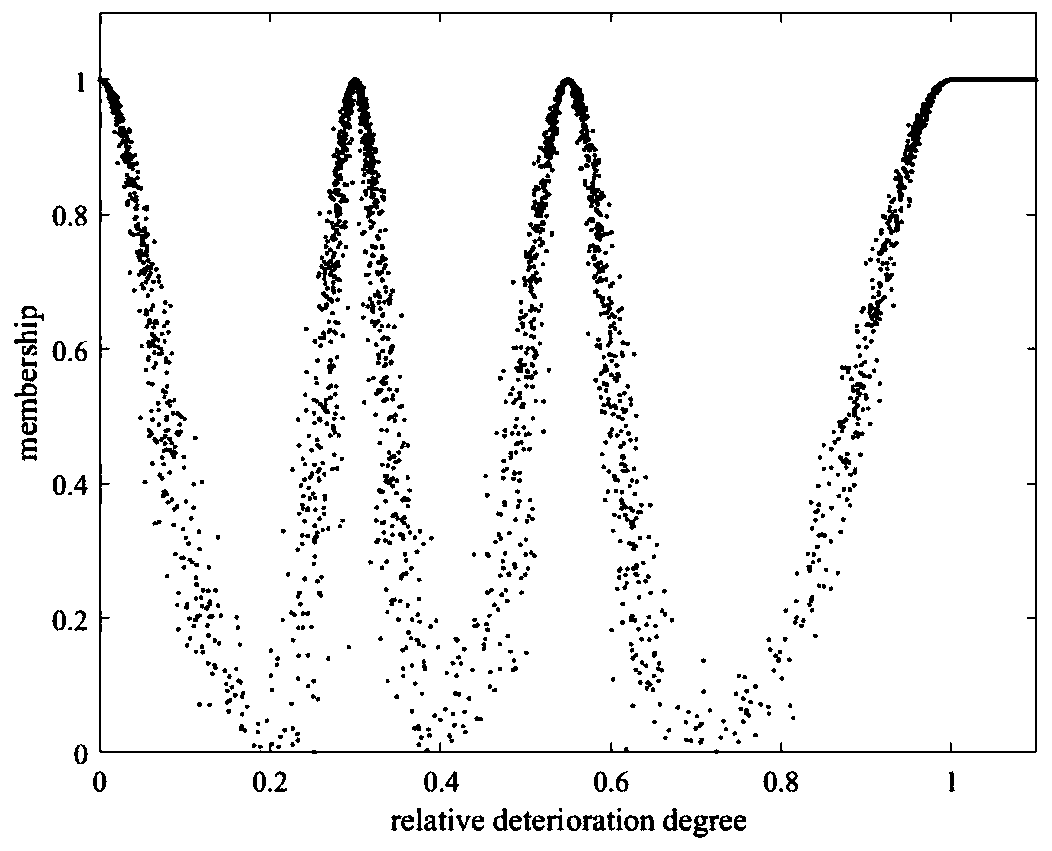Multi-level state evaluation method of power transformer
A power transformer and state evaluation technology, applied in the direction of measuring electrical variables, instruments, measuring electricity, etc., can solve problems such as insufficient data processing and statistical analysis methods, multi-dimensional unfavorable information, multi-data analysis and display, and insufficient information analysis.
- Summary
- Abstract
- Description
- Claims
- Application Information
AI Technical Summary
Problems solved by technology
Method used
Image
Examples
Embodiment 1
[0051] A multi-level state assessment method for a power transformer, comprising the following steps:
[0052] Step 1: Data collection: Collect the online monitoring indicators of the power transformer body, bushing, on-load tap-changer, cooler system, and non-electrical protection devices, and export the historical faults of the same type of transformer in the database with the same operating environment as the power transformer The database and online monitoring indicators are shown in Table 1;
[0053] Step 2: Fusion of the membership degree of the index layer: including the following specific steps:
[0054] Step 2-1: Perform degradation processing on each index: There are many indexes of transformers with different magnitudes, and the relative deterioration degree is used to normalize the indexes. According to whether it increases or decreases during the deterioration process from normal to abnormal, it can be divided into positive deterioration index and negative deteri...
PUM
 Login to View More
Login to View More Abstract
Description
Claims
Application Information
 Login to View More
Login to View More - Generate Ideas
- Intellectual Property
- Life Sciences
- Materials
- Tech Scout
- Unparalleled Data Quality
- Higher Quality Content
- 60% Fewer Hallucinations
Browse by: Latest US Patents, China's latest patents, Technical Efficacy Thesaurus, Application Domain, Technology Topic, Popular Technical Reports.
© 2025 PatSnap. All rights reserved.Legal|Privacy policy|Modern Slavery Act Transparency Statement|Sitemap|About US| Contact US: help@patsnap.com



